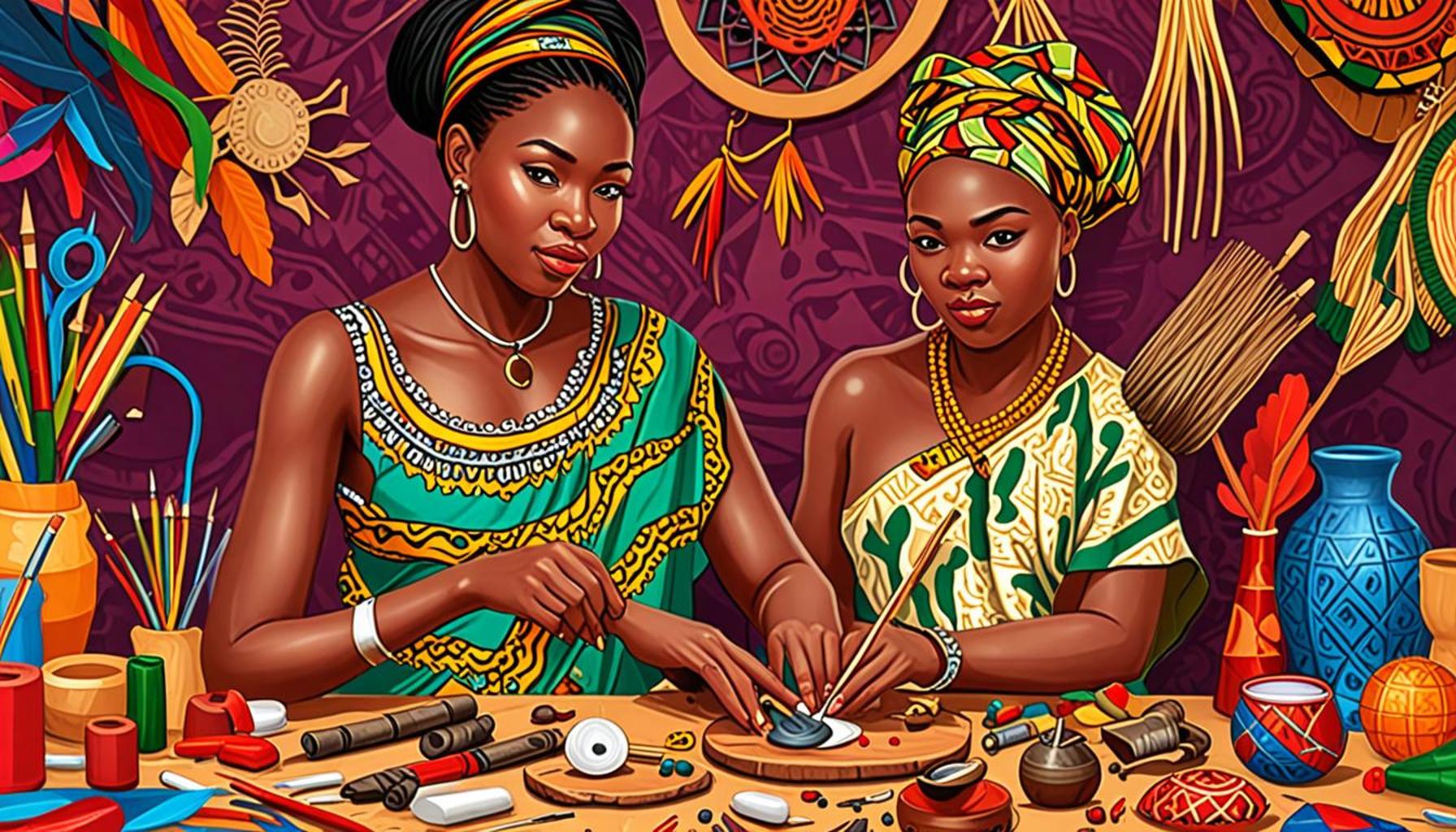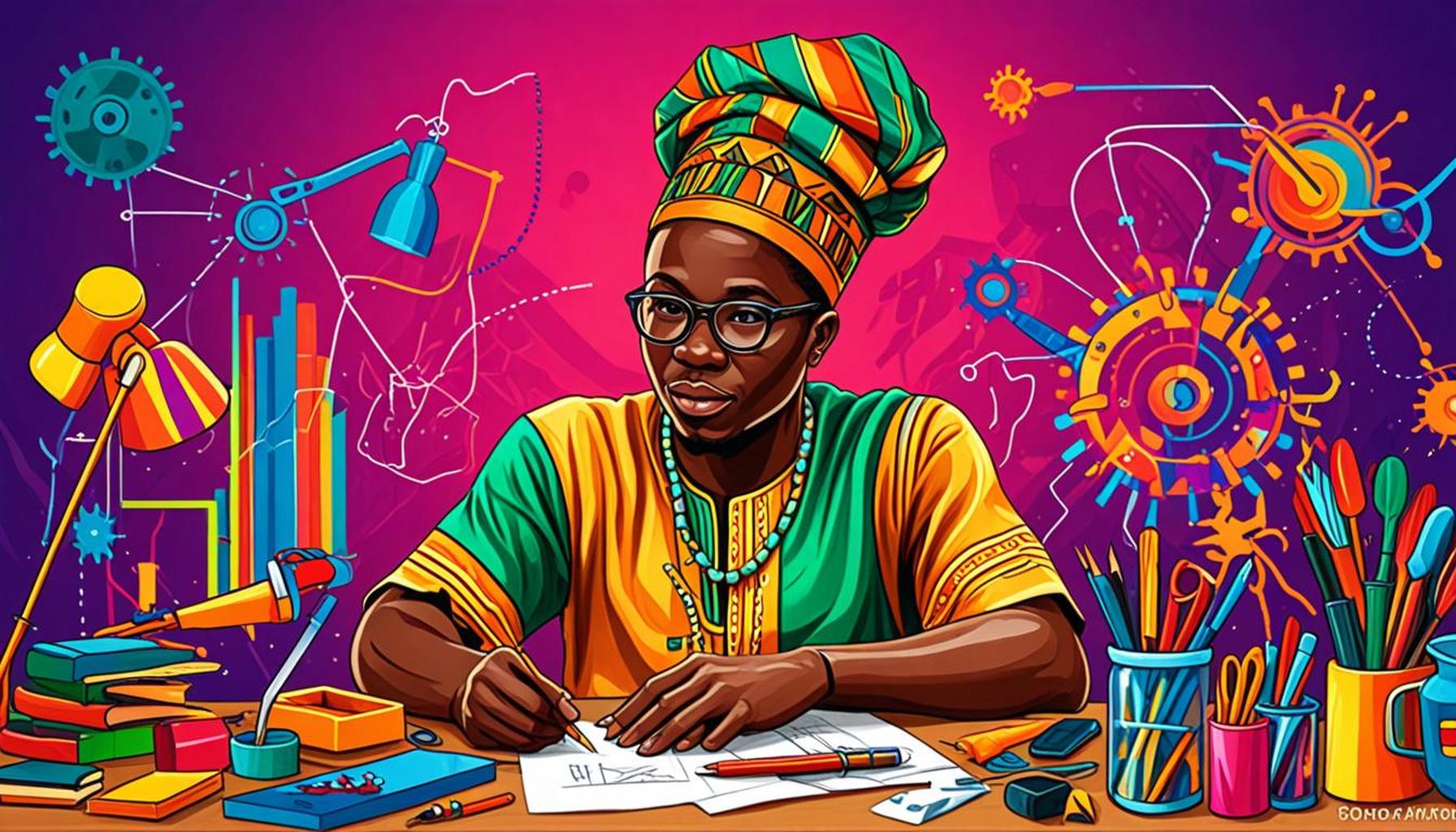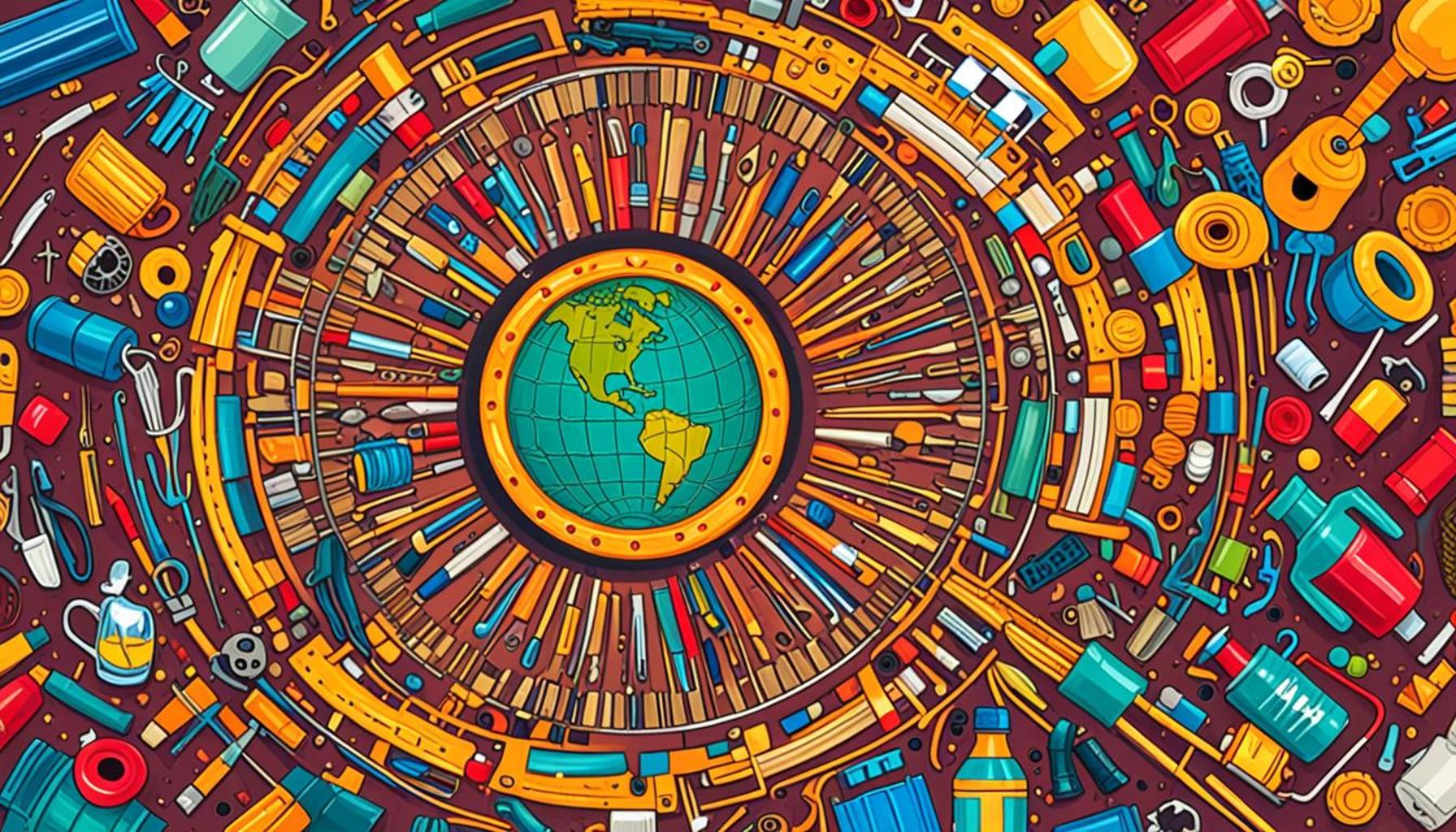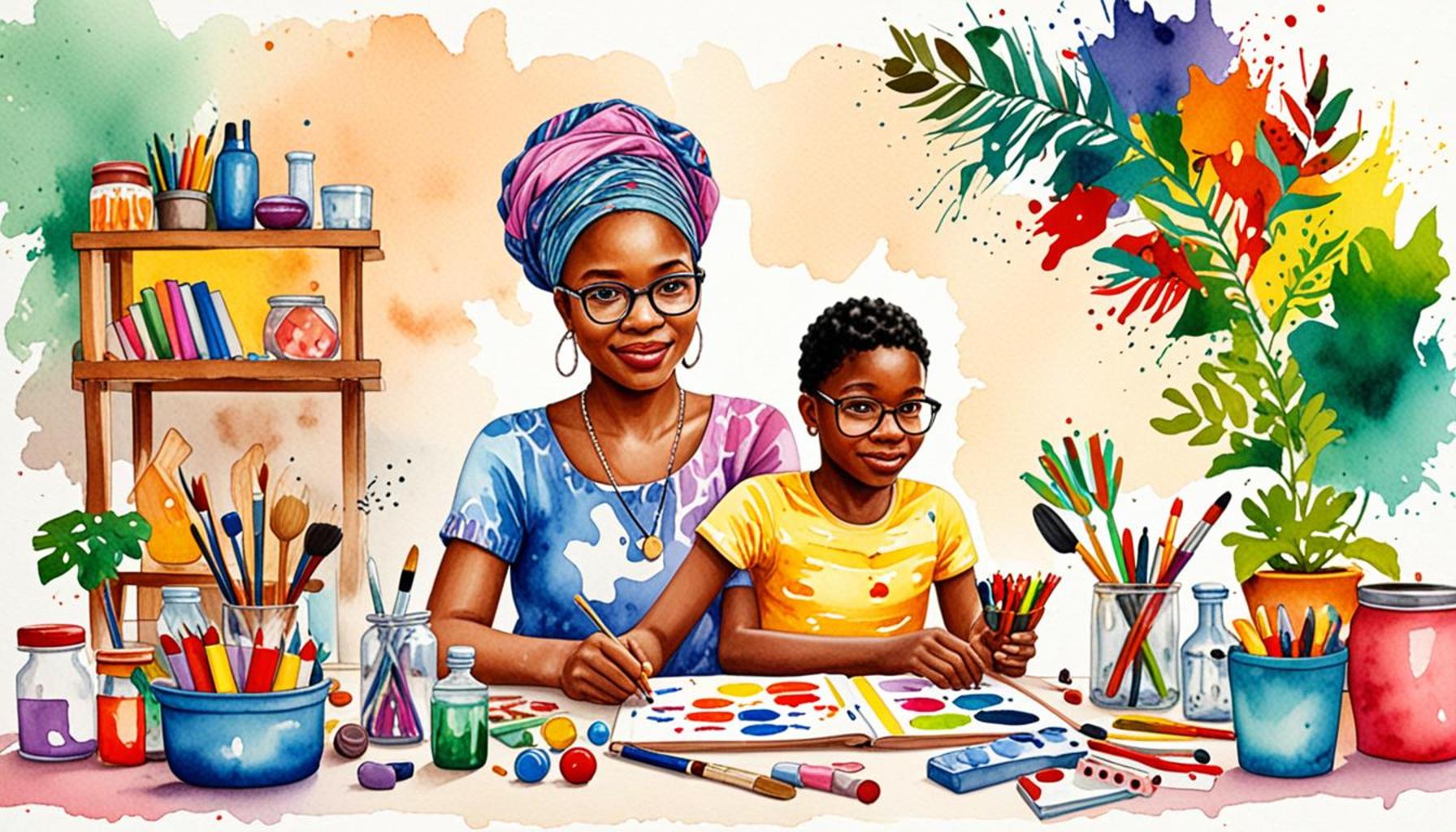Handmade Innovations and Cultural Preservation: How Nigerian Creators Are Modernizing Traditions

The Fusion of Heritage and Modernity in Nigerian Art
Nigeria, a country rich in cultural diversity, boasts a vibrant tapestry of cultural heritage that has been shaped over centuries. In this dynamic landscape, talented creators are not just safeguarding traditional practices; they are actively revitalizing them to resonate with contemporary audiences. By embracing innovation, these artists breathe new life into age-old customs, merging the past with the present in a fascinating manner.
Textile Arts: A Fashionable Revolution
In the realm of fashion, the resurgence of traditional fabrics like Ankara and Aso Oke has sparked an exciting transformation. Designers such as Tiffany Amber and Orange Culture are modernizing these textiles, creating stunning outfits that appeal to both local and international markets. For instance, Ankara dresses are now crafted into chic, asymmetrical silhouettes, making them suitable for various events, from casual outings to formal gatherings. This blend of tradition and modernity not only showcases the rich patterns of Nigerian fabrics but also promotes cultural pride among younger generations.
Craftsmanship: Reviving Artisanal Techniques
The world of Nigerian craftsmanship reflects a striking amalgamation of traditional and contemporary practices. Potters in communities like Kano and Jos have begun to incorporate modern glazing techniques while retaining age-old designs that have been passed down through generations. This innovative spirit is also evident in the work of sculptors who use contemporary materials alongside traditional motifs. Artists such as Bisi Silva have drawn attention to this movement, demonstrating how timeless craftsmanship can adapt to modern aesthetics without losing its cultural essence.
Culinary Heritage: A Gastronomic Evolution
Moreover, the culinary landscape in Nigeria is witnessing a renaissance of its own. Chefs are embracing indigenous ingredients—like jute leaf, yams, and plantains—while reimagining classic dishes. For instance, Chef Eddy Akinyemi has garnered acclaim for simplifying traditional recipes and presenting them with a modern flair, such as infusing Nigerian Jollof rice with international spices or serving Egusi soup in contemporary plating styles. This not only highlights the versatility of local ingredients but also invites a new generation to engage with their culinary heritage.
This movement of modernizing traditional art forms is more than just an aesthetic choice; it acts as a means of cultural expression and identity. As these creators meld tradition with contemporary influences, they forge a dialogue about the significance of cultural authenticity in an increasingly globalized world. While this evolution raises inquiries about the essence of cultural integrity, it also emphasizes that innovation can coexist harmoniously with tradition, ensuring that practices remain vibrant and relevant.

As we delve deeper into the world of handmade innovations in Nigeria, we invite you to discover the inspiring stories behind these remarkable creators. Their journeys reflect the intricate balance between preserving cultural identity and exploring new artistic horizons, ultimately redefining what it means to be a custodian of heritage in today’s world.
SEE ALSO: Click here to read another article
Innovative Craft: The Revival of Traditional Techniques
The evolution of Nigerian handicrafts is a testament to the country’s rich artisanship, where traditional techniques are being reinvigorated through innovation. As artisans seek to make their work relevant in a fast-paced world, they are marrying age-old skills with modern sensibilities. This fascinating shift can be observed in various crafts, from beadwork to wood carving, where the essence of culture seamlessly blends with contemporary flair.
Beadwork: Transforming an Age-Old Craft
Historically, Nigerian beadwork has had deep cultural significance, often symbolizing status and identity within communities. However, contemporary artisans like Yemisi Shyllon are redefining beadwork into modern jewelry designs that appeal to a global market. By experimenting with unconventional materials such as metals and fabrics alongside traditional beads, creators are crafting statement pieces that are not just accessories but pieces of art. This new style of beadwork is captivating younger audiences and foreign buyers alike, ensuring the craft’s legacy continues to thrive.
Wood Carving: From Tradition to Miniature Marvels
Wood carving in Nigeria has long been synonymous with cultural narration, with artisans telling stories through intricate carvings. Today, contemporary carvers are embracing new techniques and tools to adapt their work to modern tastes. For instance, artists like Jide Adebayo have taken traditional wooden sculptures and transformed them into functional art, such as decorative furniture that retains its cultural roots while appealing to modern interiors. This blending of art and utility emphasizes the versatility of cultural craftsmanship, making it accessible to a wider audience.
Local Markets: A Platform for Modern Interpretation
Markets across Nigeria have become vibrant hubs for this fusion of tradition and modernity. Here are a few notable ones showcasing handmade innovations:
- Balogun Market in Lagos: A bustling marketplace where contemporary designers showcase traditional fabrics with modern designs.
- Arts and Crafts Village in Abuja: A locale for artisans to display and sell innovative takes on indigenous crafts.
- Enugu Art and Craft Centre: A venue that focuses on promoting local artisans who infuse traditional techniques into modern creations.
This cross-pollination between cultures serves not only as a commercial venture but also as a mechanism for preserving and promoting Nigeria’s artistic heritage. By engaging with both local and global markets, these artisans are also cultivating a renewed appreciation for Nigerian culture. Consequently, this modern understanding offers a platform for the significance of cultural ownership and identity in an interconnected world.
As we will explore further, this ongoing transformation reshapes how traditions are perceived, making them relevant to today’s society. The balance between innovation and cultural preservation is delicate, and Nigerian creators are poised to navigate this journey with skill and creativity, ensuring that their heritage is not just remembered, but also celebrated.
| Advantage | Impact |
|---|---|
| Economic Empowerment | Nigerian creators are not only preserving culture but also generating income through traditional crafts, enhancing local economies. |
| Global Recognition | The fusion of innovation with tradition is attracting international attention, allowing Nigerian artisans to showcase their work on global platforms. |
| Community Engagement | Many creators are forming cooperatives to share skills and resources, fostering a sense of community while keeping cultural practices alive. |
| Educational Opportunities | Workshops and trainings are being organized, creating an environment where younger generations learn traditional skills integrated with modern techniques. |
This table highlights the essential advantages that Nigerian creators are unlocking by effectively blending traditional and innovative practices. Through economic empowerment, they contribute to local economies, while achieving global recognition places Nigerian art on the world stage. Community engagement not only cultivates skills but also strengthens cultural identity, and the advent of educational opportunities ensures that this rich heritage is passed down, adapted, and modernized. Such advancements ignite curiosity about the profound impact of cultural preservation within the handmade arts, beckoning further exploration into this vibrant field.
LEARN MORE: This related article may interest you
Crossover of Art and Technology: New Dimensions of Creativity
As the world becomes increasingly digital, Nigerian artisans are leveraging technology to enhance their craft and reach new audiences. The intersection of tradition with technology not only preserves cultural heritage but also revitalizes it, inspiring a new generation of creators. This transformative approach is evident in several areas, particularly in textile production, pottery, and graphic art, where the marriage of old-world techniques and modern technology is yielding exciting results.
Textile Production: Weaving Stories with Innovation
Nigeria’s textile industry has always been a vibrant canvas of cultural expression, seen in the intricate patterns of Aso Oke and Ankara fabrics. Contemporary textile artists, such as Fadeke Oduyale, are utilizing digital printing technologies alongside traditional weaving methods to create stunning fabrics that fuse modern aesthetics with traditional storytelling. By integrating culturally significant motifs into their designs, these creators not only pay homage to their roots but also appeal to the fashion-forward consumer. This innovation is especially resonant in the growing ethical fashion movement, where there is an increasing demand for items that celebrate craftsmanship and cultural identity.
Pottery: Shaping Culture through Contemporary Forms
Nigerian pottery has its origins deeply embedded in the customs of various tribes, where each piece tells a unique story. Today, artisans like Chizzy Obi are revolutionizing traditional pottery by introducing contemporary forms and functionality into their work. By using techniques such as glazing and sculptural design, these artisans are creating pieces that serve both decorative and utilitarian purposes. This modern twist not only enhances the visual appeal of pottery but also attracts a wider market, leading to greater appreciation of this ancient art form.
Graphic Art: Digital Canvas for Cultural Narratives
The rise of digital graphic art has provided Nigerian creators with a platform to reinterpret and globalize their cultural narratives. Artists like Jessica Oboh are adeptly utilizing social media and digital tools to showcase their work, allowing them to narrate their stories engagingly and visually. This new medium not only promotes their art locally but also connects them with international audiences, cultivating a new understanding of Nigerian culture through contemporary visual expressions. Furthermore, initiatives like the Nigerian Digital Art Week are facilitating the exchange of ideas and encouraging collaboration among artists, blending traditional narratives with modern expressions.
The emergence of platforms like Afriquik and Shakara Gals, which focus on showcasing handmade innovations, underscores the collective effort to promote cultural preservation while navigating modern consumer landscapes. These marketplaces encourage artisans to share their stories while selling products that represent not just creativity but also the authenticity of Nigerian culture.
As these creators boldly redefine what it means to be a craftsman in Nigeria, their work serves as both an anchor to the past and a beacon for the future. By constantly evolving their crafts through technological integration, they ensure that traditional techniques remain dynamic and relevant, securing their place in the tapestry of global artistry.
CHECK OUT: Click here to explore more
Conclusion: Celebrating Innovations while Cherishing Heritage
The evolution of Nigerian craftsmanship through handmade innovations presents a compelling narrative on the dynamic relationship between cultural preservation and modernization. As artisans like Fadeke Oduyale, Chizzy Obi, and Jessica Oboh embrace technology, they are not merely adapting to changing times; they are redefining what it means to celebrate Nigerian culture. This intersection of tradition and modernity proves essential for passing down the rich heritage of Nigeria while simultaneously ensuring its relevance in a globalized context.
Moreover, the rise of digital platforms and eco-conscious movements demonstrates a vibrant marketplace ready to embrace unique cultural expressions. Creative storytellers are not only preserving age-old techniques but also engaging new generations and audiences, highlighting the importance of local craftsmanship. These innovations are a testament to the resilience and versatility of Nigerian artisans, who weave narratives that resonate across cultures while remaining rooted in their histories.
As we look to the future, the continued emergence of new technologies and platforms promises an even greater fusion of creativity and tradition. This ongoing journey invites connoisseurs and casual audiences alike to explore the profound intricacies of handmade creations, illuminating how Nigerian creators are paving new paths for cultural heritage. Ultimately, the vibrant tapestry of Nigerian craftsmanship reflects a commitment not just to the past but also to a hopeful and innovative future that celebrates tradition in every thread.


